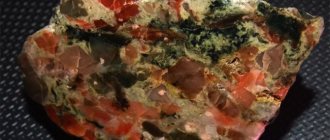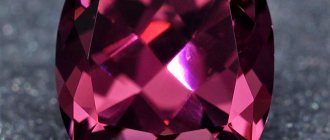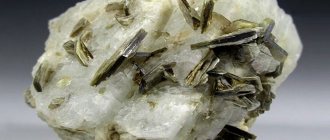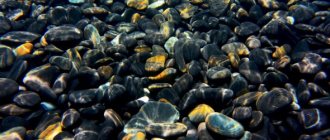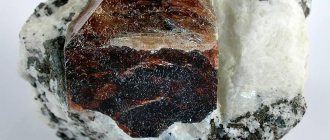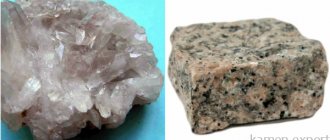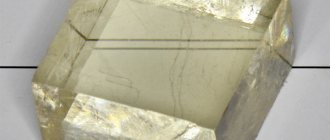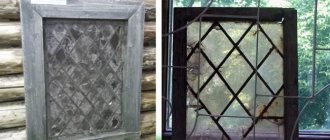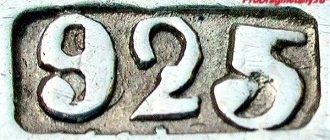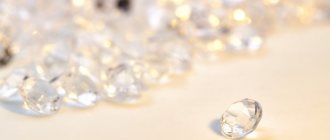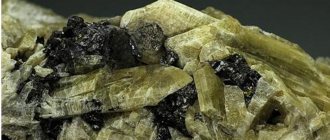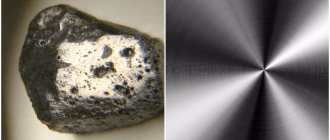4
Average rating: 4
Total ratings received: 1.
4
Average rating: 4
Total ratings received: 1.
Feldspars are the most abundant minerals in the earth's crust, where they constitute about 64% of the total. Varieties of feldspars are found in most rocks of various origins. Some rocks are named after feldspar, for example, amazonite granite, labradorite. Let's look at information about feldspar and its varieties.
Story
Spars were formed as a result of volcanic eruptions, displacement of tectonic plates, exposure to wind and precipitation.
Two-thirds of the volume of the Earth's igneous rocks are minerals of the feldspar group. There are many of them on the Moon and in meteorites. Along with quartz, this is the most common rock on Earth.
The term “feldspars” refers to a group of four dozen minerals.
This is a Swedish-German tracing paper: “spat” is translated from German as a layered, plate-like stone (due to the presence of mica, the crystals are stratified into thin shiny plates); feldt - field, arable land in Swedish, feld - in German.
Used as a scientific term since the 18th century.
Archaeologists find jewelry and household utensils made of feldspars during excavations in Egypt and Asia (at the site of ancient Mesopotamia).
Even the ancient Chinese, who invented porcelain, added spar powder to clay to give strength to dishes, decorative vases and figurines, which made them famous throughout the world.
Theories of rock formation
The problem of granite formation is still the subject of scientific controversy. And the point here is not what minerals granite consists of, but the places of its formation and the conditions conducive to the emergence of such structures. By default, granite is classified as igneous rock, that is, its formation is, one way or another, associated with ancient volcanism and solidification of magma.
During volcanic activity in anhydrous conditions, basalts are formed, and other igneous rocks (pumice, tuff) are obtained when lava enters water. There is a hypothesis according to which granite is the product of a partial melt, and some solid inclusions are preserved in it. Its author was N. Bowen, who was engaged in experimental petrology. He established that granite massifs are associated with basalt ones, and the way they occur indicates the formation of granite together with basalt.
Other scientists are developing theories for smelting more fusible elements from massifs of igneous rocks, and still others attach great importance to the granitization of rocks due to the influence of water and ion exchange.
All of these theories can explain the origin of specific granite deposits, but none of them are completely applicable. In any case, they cannot explain how the granite layers of the continents were formed.
Physico-chemical characteristics
From a chemist's point of view, spar is a silicate.
Feldspars are united in a group by their origin, the presence of aluminosilicate in the composition, the similarity of the crystal lattice and the white color of the trait.
| Formula | { K, Na, Ca, sometimes Ba }{ Al2Si2 or AlSi3 }O8 |
| Color | White to bluish or reddish |
| Stroke color | white |
| Shine | Glass |
| Transparency | Translucent to transparent |
| Hardness | 5—6,5 |
| Cleavage | Perfect |
| Density | 2.54—2.75 g/cm³ |
| singonia | Monoclinic or Triclinic |
| Refractive index | 1,554—1,662 |
The basic formula includes oxides of calcium, sodium, aluminum, and silicon. They can be replaced and supplemented by impurities of chromium, nickel, iron, and copper. As a result, the white crystals take on color.
Gabbro
Gabbro is a deep-seated, holocrystalline, dense, viscous rock consisting of plagioclase and the dark minerals hornblende and biotite. The presence of these minerals gives gabbro its color - mainly gray to black.
Gabbro rocks are among the best sculptural materials for monument pedestals and are easy to process.
The texture of the surface processed with percussion instruments has a light gray color, so inscriptions and ornaments stand out in particular contrast.
Compressive strength up to 2000 kg/cm2, volumetric mass 2970 kg/m3.
Place of Birth
Feldspars, as rock-forming minerals, form the basis of all continents, including Antarctica. They account for half the mass of the earth's crust.
Raw materials for technical purposes are mined everywhere, unlike jewelry material:
- The most beautiful moon rocks are found in the Pamirs.
- Orthoclase is the heritage of Asia and Europe.
- Germany, India, and China have established industrial production of Labradorite. But the most expensive samples are the pride of Finland.
- India and South America are rich in Amazonites of premium quality. But these are isolated cases: serious production is taking place in the Russian North and in the Baikal region.
The planetary volume of production of technical spar raw materials amounts to billions of tons.
The deposits of Madagascar, Germany, the USA, the Russian Federation, Poland, Ukraine, and Kazakhstan differ in scale.
Where are the stones mined?
Feldspar makes up about 60% of all mineral deposits in the Earth's crust. Basically, it is attributed to igneous origin, not excluding metamorphic formation. Specimens of the breed can be found in every corner of the planet.
Active microcline development is underway in Russia, Poland, Ukraine and some other European countries. Amazonite crystals are overwhelmingly mined in Africa, Brazil and India. China, Canada, Germany and Greenland are rich in Labrador. Particularly valuable samples are found in Finland. Active mining of orthoclase is carried out in Russia, Mexico, Australia, Italy and some other countries, and adularia predominates in Tajikistan, India, Switzerland, Sri Lanka and some states of America.
Colors and varieties
Mineralogists distinguish the following varieties of feldspars:
- Potassium feldspars. Calcium in the composition is replaced by potassium. Typical representatives are adularia, orthoclase, sanidine, microclines (including amazonite). Orthoclase is translucent, sometimes completely transparent, painted in gray-pastel colors.
Orthoclase - Calcium. Spars with inclusions of calcite, sodium appears in the crystal lattice. Also known as plagioclases. Jewelry types – labradorite, andesine, heliolite, albite (rare). They are distinguished by their bright colors and iridescent surface (especially Labradorite). Graphic pegmatite is coveted by collectors.
Labrador - Potassium-barium feldspars . The most famous is Celsian. This green or greenish-brown stone is very rare, found as inclusions in metamorphic rock. However, it is opaque, so it is sought after only by collectors, but not by jewelers.
Their abundance determines the presence of almost all colors in the minerals of the feldspar group: from bluish-black labradorite to golden heliolite.
How much is spar valued at?
The cost of feldspar consists of a number of indicators of the rock, and primarily the type plays a role. The price reflects the degree of transparency, deposit, shade and even the effect of shillerization and iridescence on the surface. On average, you need to pay from 1 to 3 dollars per gram of green amazonite with inclusions.
Specimens of the same breed, but in a dark shade without inclusions, can be purchased for $10 or more. The most expensive among spars is considered to be the sunstone heliolite, which sells on average for 1.2-3 dollars per bead and about 100 dollars for a solid necklace.
Where are feldspars used?
Depending on their appearance and condition, feldspars are sorted by industrialists, jewelers and collectors.
Industry
Opaque, nondescript stones have found application as industrial raw materials:
- This is a source material for the production of glass, ceramics, and building materials.
- The production of electrical products (cables, insulators) and plumbing equipment cannot be done without spar.
- Composite materials based on feldspars are used in all areas of mechanical engineering, including defense, space and high technology.
- The mineral is used in welding, metallurgy, and construction (ore, mineral paints, rubber, cladding).
Feldspar is used to make light abrasives for cosmetics and perfumes (toothpaste, scrubs, soap).
Jewelry
Jewelers are in demand for translucent and transparent varieties: adularia, amazonite, andesine, heliolite (or sunstone), labradorite.
Amazonites
They are used to make original jewelry or used as an imitation of more expensive stones.
Application of the mineral
Even in ancient times, a mineral such as feldspar was used in everyday life. Somewhat later, during the reign of Ancient Egypt and Mesopotamia, unique objects of art and jewelry were made on its basis. In Ancient China, craftsmen added its powder to a clay solution, which helped achieve incredible strength in the porcelain dishes and figurines they made. However, over the years, the scope of its application has expanded significantly. The mineral is used in many industries due to its specific properties and unlimited possibilities. So, its parts are used:
- in the manufacture of various impurities that are found in its rock;
- jewelry making;
- abrasive in light form;
- welding;
- metallurgy;
- glass production;
- in construction;
- ceramic industry.
How to spot a fake
Almost all spars are inexpensive, they are rare, but they are counterfeited:
- More often they use glass with copper particles (it becomes similar to heliolite). Interspersed with chrome or nickel imitate labradorite.
- However, the iridescence is not so bright, and the shine when turning is uneven, the imitation looks poorer in color.
- To identify a sample, you hold it in your hands - the stone will not heat up immediately and will be massive. Light will refract in a vessel with water.
Any spar can easily scratch glass.
It is only possible to accurately determine the origin of a sample using special equipment, so it is better to buy jewelry from trusted sellers.
Product care
Beautiful stones are extremely in demand in jewelry. Valuable are samples with the effect of aventurescence, when the inside of the product glows from the inside with pinpoint sparks. The market offers not only jewelry made from natural spars, but also often offers the buyer transparent structures with artificial inclusions in the mass of copper plates.
Modern technologies have led to the fact that artificial adularia are no longer rare. The shimmer in such products is not always as bright as those provided by nature and the shine is not uniform.
Jewelry made of synthetic or natural stone is stored in a specially selected place and always in a closed case. Boxes are made of wood, cardboard or other material that allows moisture to pass through; even a child can make such packaging. If this condition is not met, the stone may fade and lose its attractiveness. For each specimen, you need to make an individual container to avoid contact and friction of the stones.
If soiled, samples are washed with warm water and soapy water. Dry the products in air or use soft napkins or natural fabric. If spar is used in the manufacture of tableware, then handling requires care, since the material is still fragile.
How to care
Feldspars do not require special care:
- An ordinary box is enough for storage.
- Dirt is removed with warm water and a light detergent.
- Dry with a paper towel or soft cloth.
Once every six months, you can do a general cleaning in a solution of water, detergent and ammonia - proportion 200:30:20 ml. The products are left for 10–15 minutes, after which they are rinsed with clean water and dried with a napkin.
Small plastic made of mineral requires care. You need to place it so that it doesn’t fall and no one hits it.
Diorite
Diorite is a plutonic rock consisting primarily of the mineral plagioclase, including the colored mineral hornblende.
Sometimes quartz is present, in which case the rock is called quartz diorite. The color of diorite is gray, dark gray, grayish green. The color of diorite is lighter than that of gabbro, sometimes they have a completely leucocratic appearance.
The structure of diorite is medium-grained (less often fine-grained), the polishability of diorite is average. Compressive strength 1800-2400 kg/cm2, volumetric mass 2640 kg/m3.
Price
Industrial spar raw materials are sold on the world market at $85–105 per ton. They charge even more for sanidine, an essential component of elite “bone” china.
Russian stores offer to buy jewelry and collectibles from all over the world (price/rub.):
- heliolite (bead, diameter 2 mm) – 92;
- amazonite (30x45x43 mm, India) – 1,800;
- sanidine (36x13x18 mm; Madagascar) – 820;
- microcline (43x25x41 mm, Kola Peninsula) – 200.
The most expensive of jewelry spars is heliolite. Prices for jewelry with such inserts are thousands (silver) or tens of thousands (gold) rubles.
History of the use of mica in industrial areas
The first cases of the use of this mineral, mainly instead of window glass, were attested in Novgorod (X-XII centuries) during the period of development of the riches of Karelia and the Kola Peninsula in this territory. Then Ivan the Terrible conquered Novgorod and Pskov, which contributed to the acquaintance of the Moscow rulers with mica.
At the beginning of the seventeenth century, the mica industry was already quite widely developed in Karelia. According to official data, by the beginning of 1608 there was a Decree of the Moscow government regarding the collection of taxes from the mined mineral in the amount of one tenth of the total volume.
The development and exploration of Siberia led in the 17th century to new discoveries of mica deposits. Its presence was attested by Vladimir Atlasov in 1683 on Aldan. These deposits were subsequently forgotten, and only two hundred and fifty years later (on the eve of the Great Patriotic War) were rediscovered. At that time, the exploitation of mica began primarily for the needs of the country's defense.
Medicinal properties
The healing properties of feldspars have been thoroughly studied:
- Andesine neutralizes depression or suicidal tendencies.
- Amazonite improves the functioning of the heart and the state of the central nervous system.
- Heliolite is beneficial for blood and skin.
- Labradorite normalizes the functioning of the musculoskeletal system and restores reproductive functions.
- Adularia and orthoclase relieve attacks of epilepsy, inhibit oncology, and relieve depression.
Only natural and whole specimens are suitable for medicinal or magical purposes.
Spar and zodiac signs: who is suitable for them
Among the breed options, everyone, regardless of date of birth, will be able to choose a suitable sample for themselves. For example, astrologers recommend that Virgos, Aries, Scorpios and Leos choose Labradorite. But Cancers, Aquarius and Capricorns should pay attention to other varieties of the breed.
It is believed that all types of feldspar except microcline are universal in terms of astrological contact. For Scorpios, Aries, Cancers and Taurus, Amazonite would be an ideal option. Adularia is also suitable for these signs, as it can help realize hidden potential. Andesine can have the same effect, only this time on Leo and Aries. Albit can be safely worn by representatives of all signs, receiving support and energy from the stone.
Magic properties
The magical properties of feldspar group minerals are determined by the type of stone:
- Labrador. Used by esoteric practitioners to develop paranormal abilities, communicate with otherworldly forces, or travel through time. At the everyday level, it replenishes the body’s reserves, helps develop intuition and a thirst for knowledge. However, the stone “loves” older people more.
Ring with labradorite - Adularia, orthoclase. Needed to achieve or maintain a home microclimate, love.
Orthoclase 10.34 carats
By changing its color, orthoclase warns of adultery or impending unfavorable changes.
- Amazonite It is important as a talisman of family ties. It also inspires self-confidence, makes you bolder and more assertive. But caution is needed: a person can become rude or rowdy.
Amazonite bracelet - Moon rock – an attribute of creative people and public figures. It will help you concentrate, express your thoughts clearly, and maximize your talents. Or become a psychic.
Moon rock
All spars protect a person from envy, damage, and other manifestations of dark energy.
Spar products
The most commonly found stones in jewelry are adularia (moonstone) and labradorite. Precious orthoclase is rare. Amazonite is also considered quite popular. The cut and setting of the stone greatly depend on its variety. The most common minerals are cabochon cut. A variety of metals are used for frames:
- silver (most common);
- yellow gold;
- White gold;
- black gold.
It is believed that the properties of most representatives of this group are fully revealed only in silver. Labradorite is most often seen as a pendant. Moonstone is most often used to create earrings and necklaces. Amazonite is common in the form of bracelets and rings. Earrings are usually made from orthoclase.
Geological information about granite
One of the most common rocks in the earth's crust. Rocks are dense and loose masses that make up the earth's crust. Rocks consist either of one mineral (for example, marble consists of calcite - calcium carbonate) or of several minerals. Granite consists of feldspar, quartz and mica, or fragments of other rocks. Making monuments is one of the uses of this material.
Based on their origin, rocks are divided into igneous or igneous. Granite, basalt - igneous; sedimentary, for example, sandstone, limestone; metamorphic, for example, gneisses, crystalline schists, marble, graphite.
Granite is the most common acidic holocrystalline igneous rock in the continental crust, consisting mainly of quartz, potassium feldspar (orthoclase, nitracline), acid plagioclase and mica (biotite, muscovite). Granite density is 2600 kg/m3, compressive strength up to 300 MPa. It is a good building material.
Granite - construction properties
Granite is a polymineral felsic rock, one of the most common igneous rocks on Earth. Of course, when we call granite an “acidic” rock, we do not mean taste qualities... We are talking about a high silica content.
The composition of granite is as follows:
— potassium feldspar (orthoclase) — 40-70%,
- quartz, which is the most resistant component of granite, - 20-40%,
- mica (muscovite or biotite) - 5-20%.
Feldspars and mica are low-resistant components. The durability of granite depends on them. If weathering of feldspars has begun, then further destruction of the stone proceeds relatively quickly. If, instead of mica, granite contains other minerals, for example, hornblende or augite, then the words “hornblende” or “augite” are added to the name of the granite rock.
Granite comes in different colors. Most granites are gray. However, its color can be black, dark red and less often green or bluish-gray. What does this depend on? From the mineral composition of granite. The color of feldspar has a particularly strong effect on the decorative effect of granite. But feldspars are white. Feldspathic rocks acquire their gray and black color from the admixture of dark-colored minerals - mica or pyroxene.
So, granite consists of three main minerals: quartz and two types of feldspars (potassium and sodium calcium) and mica. They are included in granite in equal quantities (30% each). They are all colorless or white. But pyroxene, amphibole or mica, which are dark minerals, make up 10%; they will stand out in granite in the form of individual flakes or grains. Let's look at the stone from afar. Everything merges into a single gray color. Obviously, the more dark minerals, the darker the granite. The color of some granites is also darker due to quartz, which can be represented by morion.
How are red granites made? Their mineral composition includes bright red or pink feldspar. They are found in all parts of the world. The color of feldspar comes from tiny crystals of hematite (iron oxide), or red iron ore, evenly scattered throughout the feldspar crystal. The coloring abilities of hematite are exceptionally great. Feldspar takes on a deep red color even when it contains 0.7-1.0% hematite. Granite feldspar acquires a pink color when the hematite content does not exceed 0.3-0.4%. So, the red color of granite is the result of complex and not always ordinary processes.
Well, how do you get green granite? This color of granite is given by inclusions of green potassium feldspar, which has long been known as the semi-precious stone Amazonite. It was used by the Indians of pre-Columbian America, the inhabitants of Ancient Egypt and Ethiopia for decoration. In 1784, amazonite was discovered in the Ilmen Mountains. In Soviet times, it was found on the Kola Peninsula. The nature of the color of amazonite is still not clear. There is a hypothesis that at first ordinary red and white feldspar crystallized, which subsequently, under the influence of volatile substances accumulating in the central part of the vein, turned into amazonite. One way or another, green granite exists and is very beautiful. A variety of green granite is blue granite. And finally, there is granite, which contains feldspar, which has iridescence, i.e. bright tint. When polished, an unusual color is revealed, which can be compared to the color of a peacock's tail.
Granite is not only beautiful, but also a strong stone. As mentioned above, it has great compressive strength. Its tensile strength is only 1/60 to 1/40 of its compressive strength. Based on grain sizes, granites are classified into fine-, medium- and coarse-grained granites. Fine-grained granites resist mechanical stress best. They wear more evenly when abraded, are more resistant to weathering and crack less when heated than medium- and coarse-grained ones. Coarse-grained granites are not fire resistant enough. When heated, they increase in volume and crack. Therefore, in residential buildings and permanent buildings, granite steps and slabs often crack after a fire.
Granites are well processed: ground, trimmed and polished. Due to the remarkable properties of granite, such as high compressive strength (from 120 to 300 MPa), relatively low tensile strength, high density, low water absorption (less than 0.5-0.8% by volume), high frost resistance, very significant thermal conductivity, very good abrasion resistance, it is widely used as a building and cladding material. Monumental structures rest on granite foundations; it is used for the construction of bridges, embankments and plinths of large buildings; crushed granite lies at the base of highways; The streets of many cities are paved with granite paving stones.
We should not forget about large monoliths. Of these, the largest in the world is the Alexander Column, erected on Palace Square in Leningrad. Its mass is 3700 tons, its height is 25.6 m, together with the pedestal and bronze figure it is 47.5 m. It is made of Vyborg coarse-grained rapakivi granite. The monolithic columns of St. Isaac's Cathedral, 17 m high, were created from the same granite.
Remember the Egyptian sphinxes on the Neva embankment in Leningrad. They are made of red granite monoliths, polished to a mirror finish. And the Bronze Horseman, a monument to Peter I? Its pedestal was carved from a large granite boulder (13.2 × 6.6 × 8.1 m), which was popularly called thunder stone, as it was split by a strong lightning strike. This is an amazingly beautiful, huge granite monolith. Finally, in Moscow, on Sverdlov Square, a monument to Karl Marx was erected, carved from a granite monolith measuring 15x5x3.6 m, weighing 750 tons (Kudashevskoye deposit in the Dnepropetrovsk region). It can be said about granite that it was already a remarkable rock in ancient times and has remained so to this day. There are granite deposits in the Karelian Autonomous Soviet Socialist Republic, on the Kola Peninsula, in the Urals, Siberia, Central Asia, in the southwestern part of Ukraine and in the North Caucasus.
Close to granites are rocks called syenites and diorites. They are similar to granites and have the same crystalline granular structure.
Characteristics of granite
Granite structure:
K - quartz; O - orthoclase; C - mica
Granites (from the Latin granum - grain) are the most common deep-seated rocks with a pronounced granular-crystalline structure. The term “granite” was first used in literature by the Italian mineralogist Andrea Cesalpino in 1596. They consist of feldspars (usually 40...60%), quartz (20...40%), mica, ferromagnesian silicates - hornblende, amphiboles, less often pyroxenes (up to 10%). Based on the size of the grains, three granite structures are distinguished:
— fine-grained (up to 2 mm),
- medium-grained (from 2 to 5 mm),
— coarse-grained (over 5 mm).
The color of granites, depending on the type and color of feldspars, is often gray (from light to dark gray) with various shades, pink, orange, red, bluish-gray, sometimes bluish-green.
Dark-colored elements (biotite, hornblende, etc.) have a certain influence on the color of granites, which usually give the stone a darker color and often a greenish tint (Yantsevsky granite). Quartz in granites is most often colorless and therefore has little effect on the nature of their color. At the same time, granites with black quartz (the so-called black quartz) or lilac-pink (amethyst granites of Sweden) are found in nature. Granites with blue quartz are extremely rare (for example, the Serebryansky deposit in the Murmansk region). In decorative terms, the most valuable are fine-grained light gray with a blue tint, red with a dark rich tone and greenish-blue varieties of granites.
The pattern of granites is quite uniform and is caused by the accumulation of dark-colored minerals or feldspars and quartz. Coarse-grained granites with a porphyritic structure usually have the same type of spotted (speckled) pattern. In red coarse-grained granites, the general background is created by large, densely located microcline crystals, which determine the color of the rock. Upon closer examination, a pattern in the form of ring-shaped chains of dark quartz and black biotite surrounding microcline crystals (Emelyanovsky granite) sometimes clearly stands out against this background. In some cases, the mosaic pattern of granites is enriched with the sparkle of feldspar crystals due to shiny cleavage planes in the fractures of phenocrysts (Cornin granite). The color and pattern of some red granites with giant feldspar crystals up to 80...120 mm in size are usually due to accumulations of grains of this mineral (Kapustin granite). In cases where such crystals have a flat shape and are elongated along long axes in one direction, sawing the rock in a transverse plane reveals an extremely unique dotted-banded pattern.
Accumulations of dark-colored minerals and feldspars can, however, relatively rarely, form a wavy-banded or smoky (cloudy) pattern, giving the granite a special decorative appearance (Shalsky, Suskiyansaarsky and some other granites). Sometimes the nature of the pattern of fine- and medium-grained granites can be influenced by the presence of quartz veins in them, which, as a rule, worsen the decorative properties of the rock (Yantsevsky granite, etc.). Granite is characterized by an average density of 2600... 2800 kg/m3, low porosity (up to 1.5%), low water absorption (0.5%), good abrasion resistance; ultimate compressive strength - 90...280 MPa and above. The durability of granite (especially its fine-grained varieties) is high: in some cases, their service life in buildings reaches 1000 years or more.
Granite is usually well polished, maintaining a mirror surface in the outer cladding for a long time, and is easy to carve, acquiring various chipping textures. The relief textures of granite especially successfully emphasize the monumentality of structures; at the same time, an interesting decorative effect of the play of chiaroscuro on the surface of the stone is achieved, sometimes combined with the sparkles of mica plates. Some varieties of granites receive a highly decorative texture after heat treatment (this applies primarily to light gray rocks, which acquire a delicate, almost sugar-white hue).
Due to their high mechanical properties and performance properties, granites are widely used in construction in the form of facing slabs, architectural and construction products, cladding parts for hydraulic structures, bridge abutments, side stones, etc. Fine-grained homogeneous varieties of granite of light gray and pink colors are used as a sculptural material, taking into account the fact that their fine-grained structure allows impact processing without the formation of non-directional chips. Granites with a coarse-grained structure are successfully used for the construction of large monumental structures and for the cladding of pedestals for monuments. \"Not a single stone is as consistent with bronze as granite,\" said the famous Russian sculptor B.I. Orlovsky.
The main areas of granite distribution in our country are in Ukraine, Karelia, Central Asia and the Urals.
One of the structural varieties of granite is pegmatite granite - pegmatite (from the Greek pegma - bond) - a rock in which quartz and feldspar naturally grow into each other. A characteristic representative of this variety is written granite, in which feldspar grows into thin wedge-shaped formations of quartz, reminiscent of Hebrew writing. Thanks to its high decorative qualities and original design, written granite can be used not only as a facing stone, but also as an ornamental stone.
Another interesting variety of granites is rapakivi (literally “rotten stone” in Finnish), which is a porphyritic rock with a large number of ovoids (from the Latin ovum - egg) - large rounded formations of pink feldspars (most often orthoclase) with a diameter of 20... 60 mm, surrounded by white or light green rims of plagioclase or quartz. The color of rapakivi is usually brownish-pink, reddish. This type of granite, widespread in Scandinavian countries, is highly decorative, but is relatively easily destroyed by weathering processes and is the least durable among igneous rocks. Rapakivi cladding was widely used in Russian urban planning in the 18th-19th centuries. and has found application in many architectural and historical monuments and structures of St. Petersburg, Leningrad and Moscow.
An exceptionally decorative variety of granite is amazonite granite of green and bluish-green color, containing green feldspar - amazonite (named after the Amazon River, where it was first discovered).
A medium-grained rock of granite composition, charnockite (named after Charnock, the founder of Calcutta, where this rock was first discovered), became widely used as a facing stone. The composition of charnockite usually includes microcline, quartz, pyroxene, diopside, and hornblende. Unlike granite, where the dark mineral is biotite or amphibole, in charnockite it is pyroxene.
The erupted analogues of granites include quartz porphyries and liparites.
